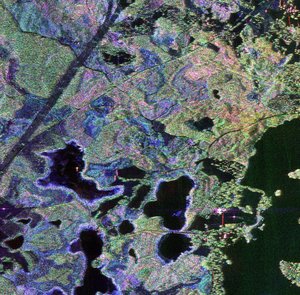Facts and figures
Launch
29 April 2025
Launcher
Vega-C from Europe’s Spaceport in French Guiana
Satellite platform
Three-axis stabilised platform, 5.8 m high, 2 m wide and 2 m long
Mass
1250 kg (including fuel)
Instrument
Fully polarimetric P-band Synthetic Aperture Radar instrument, with a 12 m diameter passive reflector
Power
1.5 kW deployable solar array with 7 m2 triple junction cells; 156 Ah Li-ion battery
Orbit
Polar, dawn-dusk, Sun-synchronous, at altitude of 666 km inclined at 98 degrees, three-day repeat cycle for interferometric acquisitions
Life
Minimum of 5.5 years
Communication
Science data transmitted to Kiruna (SE) via X-band downlink, and via S-band uplink for tracking, telemetry and command
Mission control
ESA’s European Space Operations Centre (ESOC) in Darmstadt (DE)
Data processing
ESA’s Centre for Earth Observation (ESRIN), in Frascati (IT)
Scientific objectives
Deliver the first global, repeat systematic estimates of forest biomass and height to reduce major uncertainties in the knowledge of carbon stocks and fluxes on land, including carbon fluxes associated with land-use change, forest degradation and forest regrowth.
Project and commissioning
Managed at ESA’s European Space Research and Technology Centre (ESTEC) in Noordwijk, the Netherlands
Prime contractor
Airbus (UK)
Back to Biomass homepage |








